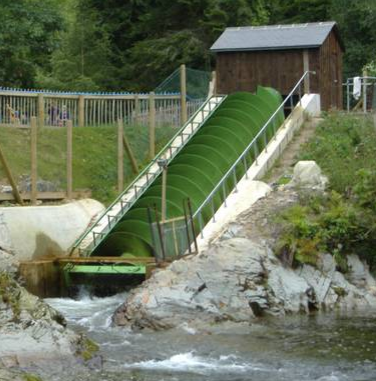My home is a short walk from Mill St, where the first falling water powered mill was built by the colonists. That stream had a number of mills along. But, after the 2nd world war when housing covered the surrounding hills. Removing the trees, adding the roads and storm drains sucked the water out of the ground quickly after storms. The water in the stream become less dependable the mills closed.
All of New England was once home to mill towns. Each was situated along a river where falling water could be tapped to power the mill. Power rather than labor, markets, or supplies defined these businesses. This model imploded when coal became a preferable source of energy. When you drive thru these old mill towns you can see lovely homes and mills that are now quite pitiful.
This is an American pattern. If the business models shift we just abandon the cities that fit that model We leave them to the poor. The coal based cities need flat water to get the coal and they had better labor and access to supplies and markets. These were flat water cities. Later when coal was replaced by electricity, and cars replaced to walking, and phones and procedures replaced hands on management abandoned flat water cities.
Anyhow, there are lots and lots of little mill ponds and dams all over New England. Sooner or later these dams will fail, but in the meantime I’ve often wondered why we can’t convert them to micro-hydro generation. Is power too cheap to make it worth the bother? Are the coordination costs or the regulatory barriers to difficult. Maybe the engineering doesn’t work.
This chart shows what kind of tech ou should use for various hydro scenarios.
Most of New England’s old mills had water wheels; and the water didn’t fall very far. How far the water falls is called “head”, and that’s the Y axis on that chart. So from this chart we learn that we want to look into something called “Archimedes.” That turns out to mean “Archimedes screw,” or actually something called a “reverse archimedes screw turbine” … though calling it a turbine is pretty silly.
Apparently these are extremely rare, though their are some in the UK, and there is somebody working on it in Canada. This is a nice video of one running, and here is a nice animated version. I have no idea if these are a good or a bad idea.
This chart, reportedly, shows feasiblity. They still need a lot of water. Which tends to suggest why this paper is so pessimistic. The entire cost/benefit of the 19th century New England mills lived it would appear in a very different world.
I wonder if these would be practical for energy storage as well. All the good hydro-storage sites are taken, but if they don’t need as much head then, presumably, other venues would become viable.

I dunno if abandoning cities is strictly an American occupation. There’s that “lost” civilization in Zimbabwe:
http://www.metafilter.com/109484/Great-Zimbabwe-An-African-empire
Though, you know, I can’t imagine a non-US city tearing down and rebuilding as much as they do in, say, Chicago.
There is that sorta movement to redevelop declining rust belt cities. A lot of this in Buffalo. But I think they’re motivated more by a kinda nostalgia for the old city, optimism for what a city can be, than aspirations to reclaim the resources that first drew a crowd.
Like the cities of Zimbabwe experts remain unconvinced that the ruins of Detroit were actually built by the natives.
You included the same picture twice. Was there some other picture you meant to include?
As to New England mills, the goal is to reuse the dams, so it seems to me that the important question is the cost of a dam as a proportion of the cost of a hydro plant.
Doug – Yes, that duplicate image is lame. It’s a side effect of my playing with something called “featured image,” who’s intent is to tie an image to the posting as “featured” … presumably it then gets used in the RSS/Atom feeds etc. But it also get’s used by the template; so it’s not working out very well. Yet.
The damns are very expensive. I know because I once costed out replacement of a damn on some property. My hypothesis has always been that the existing damns would be valuable as a starting point. But actually that’s not clear. They would all need to be brought up to modern safety standards and I can assure you they weren’t even close originally.
As I say above, the low head of most of these sites is why the screw generators an are interesting option.
Hi,
where did you take the chart with all the turbines?
Andrea – Google’s reverse image search shows assorted charts of this kind, including this one. (see http://bit.ly/291mT1I ), I suspect I grabbed that from this vendor’s site: http://greenbugenergy.com/get-educated-knowledge/types-of-turbines